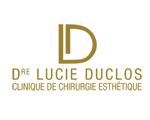What are the advantages?
As we age, the effects of gravity, sun and daily stress can become increasingly visible on the face. Facial lifting cannot stop the aging process, but it can restore a more youthful appearance by acting on the skin and muscles of the face.face and neck. With skin that appears firmer and wrinkles less apparent, your face will regain a youthful appearance.
Is it for me?
The best candidate for facial lift is the man or woman whose face and neck are beginning to sag, whose skin quality (elasticity) is good, and who has realistic expectations. Generally, he is between 40 and 70 years old.
The facelift can make you appear younger or more rested and thus help you have better self-confidence. On the other hand, it does not restore youthful vitality and health and does not profoundly change the appearance. Before opting for this intervention, clarify your expectations and discuss them with Dre Duclos. She will be happy to answer all your questions clearly and precisely and to inform you about the most appropriate treatments for your situation, indicating their advantages and disadvantages.
What techniques are used?
Facial lift can be done alone or in combination with aforehead lift and/or eyelids, a liposuction or a rhinoplasty (nose correction). Dr. Duclos might also advise you to delay facial lift and instead use fillers for a few years (see section on injections). It is also possible to use the fillers in combination with facial lifting to avoid pulling the skin too much and to obtain the most natural result.
The length of the incisions depends on the extent of the surgery. Sometimes short incisions are sufficient, and are located behind the ear and in the hair or at the temple (in front of or behind the hair) and at the cartilage in front of the ear. Occasionally, an incision is made under the chin. The incisions are made so that they are as discreet as possible. They are most of the time hidden and can usually be hidden by hair. To perform the lift, the skin is lifted from the fascia and muscles. Fat can be removed or suctioned from the neck and chin (see section on chin liposuction). Then the fascia and muscles are stretched, the skin is repositioned and the excess is removed.
What should I expect?
During the consultation, Dr. Duclos will evaluate your face, including the skin and underlying structures, and will discuss the goals of the procedure with you. Do not hesitate to ask all your questions, especially those concerning your expectations and fears regarding the result. Dr. Duclos will be happy to answer them clearly and precisely.
Facial lift is a procedure that must absolutely be adapted to each individual. If you decide to go ahead, Dr. Duclos will indicate the exact location of the incisions, explain the risks inherent to the procedure, inform you about its progress and give you pre- and post-operative instructions.
Usually, the procedure takes place under local anesthesia with sedation. Once the anesthesia is over, you will not experience any pain in your face. In some cases, general anesthesia is recommended.
The duration of the intervention depends on its extent. You will then be under observation until your condition allows you to leave the clinic. A prescription for pain medication, instructions and the date of the next appointment will be given to you before your departure. Plan to ask someone to drive you home.
After the procedure, pain is generally mild and can be relieved with prescribed medication. Significant pain or sudden swelling should be reported immediately. Some numbness of the skin is normal and will improve in the weeks and months following the procedure. The bruising will take about two weeks to fade.
You will need to wear a chin strap constantly for about two weeks and then 10 hours a day for another two weeks.
You will need to keep your head elevated for the first few days to reduce swelling. You can sleep with two or three pillows or sleep in a “lazy boy” type armchair. You will need to avoid wetting the dressings which will be removed during the follow-up visit.
You will be able to walk on the day of surgery, but you will need to avoid bending or lifting objects for the first few days. You will need to avoid taking a hot bath or going to the sauna for several weeks and exposing the scars to the sun or tanning salon for about six months.
Most patients return to work approximately two weeks after the procedure.
What are the risks?
Complications that can occur include hematoma (collection of blood under the skin), trauma to nerves that allow facial animation (usually temporary), infection, loss of skin sensitivity and reactions to anesthesia. Poor healing and necrosis of the skin can occur, more frequently in smokers.

